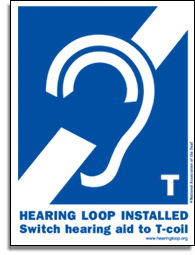Assistive Listening Devices
What will you do differently tonight when you can hear and speak more clearly?
If problems hearing and speaking in everyday situations has turned you into a recluse, assistive listening devices will break you out of your shell. Today’s powerful, but discrete technology helps people with hearing, voice, speech, and language disorders reconnect with the world.
If you’re not familiar with assistive listening devices, we hope this comprehensive overview prepared by the hearing care professionals at Better Hearing Rehabilitation Center in Durham, NC will answer any questions you may have.
What Are Assistive Listening Devices?
The terms “assistive listening device” and “assistive technology” can refer to any device that helps a person with hearing loss or a voice, speech, or language disorder to communicate. These terms may refer to devices that help a person to hear and understand what is being said more clearly, as well as express thoughts more easily.
With the development of digital and wireless technologies, more and more devices are becoming available to help people with voice, speech, listening and language disorders communicate more meaningfully and participate more fully in their daily lives.
What Types of Assistive Listening Devices are Available?
Health professionals use a variety of names to describe assistive devices, determined by the key intended function of the device:
- Assistive listening devices (ALDs) help amplify the sounds you want to hear, especially where there’s a lot of background noise. ALDs can be used with a hearing aid or cochlear implant to help a wearer hear certain sounds better.
- Augmentative and alternative communication devices (AAC) help people with communication disorders to express themselves. These devices can range from a simple picture board to a computer program that synthesizes speech from text.
- Alerting devices connect to a doorbell, telephone, or alarm that emits a loud sound or blinking light to let someone with hearing loss know that an event is taking place.
Are There Assistive Listening Devices for Large Facilities?
Several types of ALDs are available to improve sound transmission in public places for people with hearing loss. Some are designed for large facilities such as classrooms, theaters, places of worship, and airports. ALD systems for large facilities include frequency-modulated (FM) systems, infrared systems, and hearing loop systems.
This logo informs people that a public area is looped.

What Is a Hearing Loop?
Hearing loop (or induction loop) systems use electromagnetic energy to transmit sound. A hearing loop system involves four parts:
- A sound source, such as a public address system, microphone, or home TV or telephone
- An amplifier
- A thin loop of wire that encircles a room or branches out beneath carpeting and transmits the amplified sound
Some assistive loop systems, such as a receiver worn in the ears or as a headset, are portable. This makes it possible for people with hearing loss to improve their listening environments, as needed, as they proceed with their daily activities.
How Does a Hearing Loop System Work?
Amplified sound travels through the loop and creates an electromagnetic field that is picked up directly by a hearing loop receiver or a telecoil, a miniature wireless receiver that is built into many hearing aids and cochlear implants. For those who don’t have hearing aids with embedded telecoils, portable loop receivers may be used.
To pick up the signal, a listener must be wearing the receiver and be within or near the loop. Because the sound is picked up directly by the receiver, the sound is much clearer, without as much of the competing background noise associated with many listening environments.
Are There Other Types of Assistive Listening Devices?
Yes. Some types of assistive listening devices, such as a telecoil, are intended for personal use in small settings and for one-on-one conversations. They can all be used with or without hearing aids or a cochlear implant.
What’s a telecoil?
A telecoil (t-coil) is a coil of wire that is installed inside many hearing aids and cochlear implants. It acts as a miniature wireless receiver. It also is used with a variety of assistive listening devices, such as hearing loop (or induction loop) systems, FM systems, infrared systems, and personal amplifiers.
The t-coil was originally designed to make sounds clearer to a listener over the telephone. It works by receiving an electromagnetic signal from the hearing loop and then turning it back into sound within the hearing aid or cochlear implant. This process eliminates much of the distracting background noise and delivers sound customized for one’s own need.
For people who are hard-of-hearing who do not have a telecoil-equipped hearing aid or cochlear implant, loop receivers with headsets can provide similar benefits but without the customized or “corrected sound” feature that matches one’s hearing loss pattern.
How do FM System Work for People with Hearing Loss?
FM systems use radio signals to transmit amplified sounds up to 300 feet. That makes them useful in many public places such as classrooms, where the instructor wears a small microphone connected to a transmitter and the student listens via a worn receiver, which is tuned to a specific frequency, or channel.
People who have a telecoil inside their hearing aid or cochlear implant may also wear a wire around the neck (called a neckloop) or behind their aid or implant (called a silhouette inductor) to convert the FM signal into magnetic signals that can be picked up directly by the telecoil.
Personal FM systems operate in the same way as larger scale systems and can be used to help people with hearing loss to follow one-on-one conversations.
How do Infrared Systems Work for People with Hearing Loss?
Infrared systems use infrared light to transmit sound. A transmitter converts sound into a light signal and beams it to a receiver that is worn by a listener. The receiver decodes the infrared signal back to sound. As with FM systems, people whose hearing aids or cochlear implants have a telecoil may also wear a neckloop or silhouette inductor to convert the infrared signal into a magnetic signal, which can be picked up through their telecoil.
Unlike induction loop or FM systems, the infrared signal cannot pass through walls, making it particularly useful in courtrooms, where confidential information is often discussed, and in buildings where competing signals can be a problem, such as classrooms or movie theaters. However, infrared systems cannot be used in environments with too many competing light sources, such as outdoors or in strongly lit rooms.
Personal amplifiers are useful in places in which the above systems are unavailable or when watching TV, being outdoors, or traveling in a car. About the size of a cell phone, these devices increase sound levels and reduce background noise for a listener. Some have directional microphones that can be angled toward a speaker or other source of sound. As with other ALDs, the amplified sound can be picked up by a receiver that the listener is wearing, either as a headset or as earbuds.
What Types of Device Facilitate Communicating Face to Face?
The simplest AAC device is a picture board or touch screen. People who are unable to communicate verbally point to pictures or symbols of typical items and activities to express their needs. For example, a person might touch the image of a glass to ask for a drink. Many picture boards can be customized and expanded based on a person’s age, education, occupation, and interests.
Keyboards, touch screens, and sometimes a person’s limited speech may be used to communicate desired words, making communicating more precise. Some devices employ a text display. The display panel typically faces outward so that two people can exchange information while facing each other. Spelling and word prediction software can make it faster and easier to enter information.
Speech-generating devices take assisted communication into the 21st Century, translating words or pictures into speech. Some models allow users to choose from several different voices, such as male or female, child or adult, and even some regional accents.
Other advancements in speech-generating technology include those devices that employ a vocabulary of pre-recorded words and others that have an unlimited vocabulary, synthesizing speech as words are typed in. Software programs that convert personal computers into speaking devices are also available.
What Devices Facilitate Communicating By Phone?
For many years, people with hearing loss have used text telephone or telecommunications devices, called TTY or TDD machines, to communicate by phone. This same technology also benefits people with speech difficulties.
A TTY machine consists of a typewriter keyboard that displays typed conversations onto a readout panel or printed on paper. Callers will either type messages to each other over the system or, if a call recipient does not have a TTY machine, use the national toll-free telecommunications relay service at 711 to communicate.
Through the relay service, a communications assistant serves as a bridge between two callers, reading typed messages aloud to the person with hearing while transcribing what’s spoken into type for the person with hearing loss.
With today’s new electronic communication devices, however, TTY machines have almost become a thing of the past. People can place phone calls through the telecommunications relay service using almost any device with a keypad, including a laptop, personal digital assistant, and cell phone.
Text messaging has also become a popular method of communication, skipping the relay service altogether.
Another system uses voice recognition software and an extensive library of video clips depicting American Sign Language to translate a signer’s words into text or computer-generated speech in real time. It is also able to translate spoken words back into sign language or text.
Finally, for people with mild to moderate hearing loss, captioned telephones allow you to carry on a spoken conversation, while providing a transcript of the other person’s words on a readout panel or computer screen as back-up.
What Types of Alerting Devices are Available?
Most hearing aids are compatible with iPhones and other smartphones. Any hearing aid that has Bluetooth connectivity capabilities can be paired with a smartphone, while there are several apps on the market that can give you even more control over your hearing aids. In addition, certain hearing aid brands are developed to work directly with iPhones and smartphones. These hearing aids can bypass the apps and give the user the ability to make true “hands-free” phone calls, as well as enjoy stereo streaming of music and TV shows. These direct connection hearing aids also do not require a separate Bluetooth device to connect with your phone, which is a requirement for some other models. Come on in and we’ll demonstrate the technology to you.
